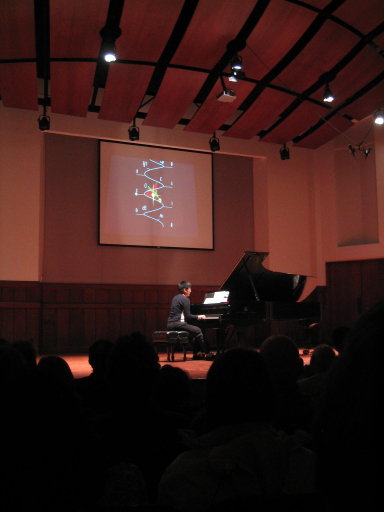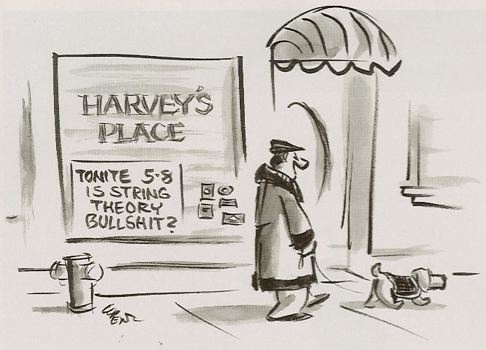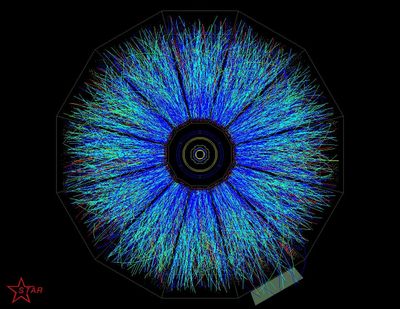Questions and Answers about Theories of Everything
 Sometimes the journalists and editors get it right. In fact, they get it right a lot of the time, but you hear more about the complaints (sometimes from me, sometimes elsewhere) about them getting it wrong, when it comes to things like science coverage especially. What am I talking about? I’m talking about the set of questions and answers that are in a new article on MSNBC that a number of people pointed out to me yesterday and today. It starts out as an article about Brian Greene’s science outreach efforts (books, and tv and movie appearances, including a new one), with some discussion of how this is regarded by his colleagues, the value it has had in raising public awareness of physics (and fundamental science in general, I would argue), and so forth. All that is interesting, but not nearly as interesting to me right now as the later parts of the article which is simply a question and answer session. (Picture above right is from a fun joke I carried out last year that you can read here – be sure to read the comments too.)
Sometimes the journalists and editors get it right. In fact, they get it right a lot of the time, but you hear more about the complaints (sometimes from me, sometimes elsewhere) about them getting it wrong, when it comes to things like science coverage especially. What am I talking about? I’m talking about the set of questions and answers that are in a new article on MSNBC that a number of people pointed out to me yesterday and today. It starts out as an article about Brian Greene’s science outreach efforts (books, and tv and movie appearances, including a new one), with some discussion of how this is regarded by his colleagues, the value it has had in raising public awareness of physics (and fundamental science in general, I would argue), and so forth. All that is interesting, but not nearly as interesting to me right now as the later parts of the article which is simply a question and answer session. (Picture above right is from a fun joke I carried out last year that you can read here – be sure to read the comments too.)
Alan Boyle, the science editor, asks Brian a series of very thoughtful questions, and Brian gives some very thoughtful answers. The topics include research in string theory (of course), hopes and possibilities for experimental and observational results (such as from the LHC and Planck) that can inform and ultimately test the ideas coming from string theory and open up new vistas in fundamental physics, research on issues such as the landscape and the idea of multiple universes, research on better developing our understanding of string theory (to the point where we can, it is hoped, extract firm predictions from it), and many other things. (I wrote an introduction to aspects of the landscape issue here, and talked a bit about a Tom Siegfried article on the discussion amongst researchers here.)
It is nice to see an honest, non-inflammatory and non-hyped conversation about the issues, and read Brian’s personal take on some of these matters. The bottom is, […] Click to continue reading this post


 On NPR’s finance programme Marketplace yesterday, there was a somewhat unusual piece. It seems that conceptual artist Jonathan Keats is making some money by selling the extra dimensional rights to various properties in San Francisco! (You can see him at the Modernism Gallery there
On NPR’s finance programme Marketplace yesterday, there was a somewhat unusual piece. It seems that conceptual artist Jonathan Keats is making some money by selling the extra dimensional rights to various properties in San Francisco! (You can see him at the Modernism Gallery there


















